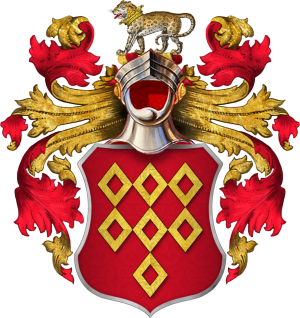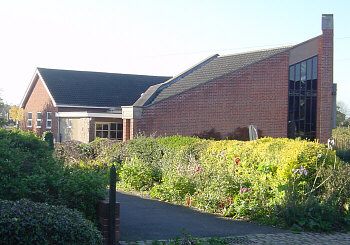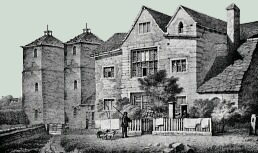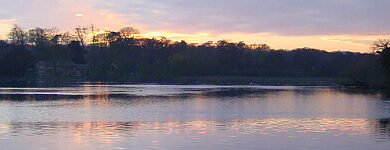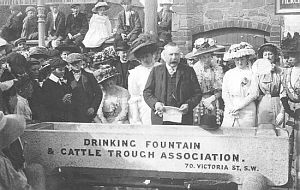Groby United Reformed Church
The Story of the Chapel Hill Folk 1822-1982
Nonconformists were meeting on Zion Hill [now Chapel Hill] in the very early part of the 19th century. They most likely met in a Frame Smiths cottage and records go back to preachers visiting the “Faithfuls of Grooby” back in 1822. In 1825 a freehold plot of land was gifted to the Free Methodists of Grooby by frame smith, Thomas Sutton. At that time there were only two plots of land not owned by Bradgate Estates and for this he was held in honour.
The population of the Village on the 1851 census shows 90 households and 441 people. The original chapel was built on this plot at the top of Zion Hill in 1853; on one side flanked with fields and with a few cottages to keep it company. It was a very simple, unpretentious red brick building to which a school room was added in 1882. From the small population, came men and women of integrity, such as the Crimean veteran who, in spite of a jaw damaged in battle, taught in the Sunday school.
Just how the Methodists became Congregationalists is lost in the mists of time but a small plaque was inserted between the windows of the old church proclaiming that it was a Congregational Church, and this plaque is set in the north east wall of the present building.
Except for the Church Deeds, records of the Chapel’s existence before 1870 have disappeared but as far back as can be traced; it was associated with Anstey Congregational Church.
Groby shared the services of all the ordained ministers and some of the evangelists who preceded them – an association that lasted until 1997 when each church called their own part-time ministers.
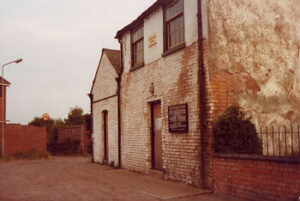
The Early Trustees
Hardly anything is recorded of these folk.
The shoemaker, Read Wykes took his family to New Zealand in 1864/65. Thomas Sutton the frames smith, lived in a dwelling called Chapel End. He owned 3 cottages in Groby and lived into his 80’s. He died in 1883, but wasn’t buried in the village; his estate worth, £47. 0s. 6d was left to his granddaughter.
Tent Meetings & Bible Punchers
The population in Groby around the turn of the century had risen to 925. It is told the horse drawn missionary van used to arrive in the village in the summer and pitch a tent on what is now the allotments on Ratby Road, holding open air meetings each night of the week. Regular mission meetings were also held in the Chapel and appear to have continued for some thirty years. It is recorded that one hundred handbills were printed in Anstey and distributed at these meetings. A Church Roll for 1906 records that fourteen young people were brought into membership after a fortnight’s mission led by the Leicester YMCA.We have no way of telling if these two missions were linked but it is likely that the tent missions were organised by Scripture Union.
Grim tales are told around this period of cock fighting in the village and bulldog fights on Zion Hill, also on Saturday evenings, Pentecostal Bible punchers congregating in the Rookery! At Christmas time, however, the mood became mellow with the mencarrying the Chapel’s harmonium around the village to accompany the carol singing.
Snippets from the Minutes Book
A well preserved Minutes Book, dated January 1900 is the earliest account of a Church Meeting. Here we can read that Robert Chaplin (great-grandfather of today’s generation of the family) was re-elected as Church Treasurer.
At that same meeting, it was also proposed and carried that:
…Chapel seat rents be done away with
Apparently, seats had a positional value and Groby Congregationalists valued their church to the extent of paying to sit in it.
TEMPTATION was close at hand, as opposite the Chapel one of the cottages served as an off-licence, evidently run by a Mrs Murby! In 1902 Saturday night meetings were instigated with the intention of starting a Band of Hope and in subsequent years, it is told, a number of young people ‘Signed the Pledge’.
The 1920’s see the dawn of women playing a more official roll in the life of the Church. The first two deaconesses’, Mrs James Roberts and the indomitable Mrs Harriet Toone, were appointed at the January 1921 AGM. Both ladies had been received into Church Membership at the turn of the century and had acquired a wealth of experience by giving generously of their time.
An Official Change of Administration
The name Robert Chaplin (retired grocer) appears again in 1928, when as Trustee of the charity known as the Free Methodist Chapel, he applied to the Board of Charity Commissioners.
After due notice of intention to publish an Order according to the direction of the Board, he affixed a notice to the principal outer door of the Chapel, on 31st January 1929. Having received no notice of any objection to the proposed order, the Free Methodist Chapel in the Parish of Groby and its endowments thereof were henceforth administered and managed by the body called, The Leicestershire & Rutland Congregational Union, as trustees of the charity
[The Congregational Union was formed in 1831 with the primary object of ‘promoting evangelical religion in connection with the Congregational denomination’].After 75 years, Robert’s formal notice presumably made the Zion Hill folk legitimate; as a record of contributions being made to the Union appears in 1906 and representatives from the Groby Chapel were attending Union meetings in Leicester as early as 1900.
The 1930s & The War Years
Around this time free will offerings were taken at Communion services and the money given to aged members of the congregation. It is recorded that 16/- was collected and distributed to eight recipients by the Rev ‘Joe’ Millhouse.
In 1932 there is a first mention of fund-raising – a proposed rummage sale, a social evening and coffee supper being held to augment the funds to run the Chapel.
In 1938 it was agreed that electric lights should be put in the Chapel and schoolroom and water should be laid in by the Leicester Corporation Works Department.
1939 saw the start of the annual Field Days which were held on Mr Ball’s fields, situated at the top of what is now Crane Ley Road – this was just a track up to the farm. A social committee was formed to arrange the grand opening, organise stalls and side-shows, which included skittles and hoopla and to serve afternoon teas, priced at 9d. These events ceased with the onset of World War 11.
On Friday evenings during the War, the Rev Mead held children’s film shows known as the tup’enny rush and for this he was remembered with much affection.
Sunday school outings were trips to the Charnwood Forest in two of Smith’s little red buses, followed by tea at Blakes Hey Farm.
Church Meetings & Crisis Meetings
For many years, Deacons’ and Church Meetings were held in members’ homes and followed by ‘a welcome cup of tea’. During the War, when the men were away fighting, meetings were chaired by the Rev A R Mead with no more than four or five women in attendance. Stalwart ladies such as Mesdames, Ball, Tilley and Toone, all of whom held various offices in the church for long periods of time, defied their need of rest and served the cause. Surprisingly, there was the briefest of agendas, with hardly any discussion. Maybe the real business was sorted around the kitchen tables!
Monthly Family Services were started in 1944, the scholars attending with their parents and taking an active part in the worship. At this time Mrs Ivy Sutherington (formally a Groby girl) managed to travel from Anstey and conduct the Sunday school, while her husband Charlie was a soldier in Italy.
With the population of Groby growing steadily, the 1951 census shows 1929 on the Roll, a good deal of foresight was shown at a time when attendances and finances were at very low ebb. A decision was taken by the Church Meeting in 1945 to contact Market Bosworth District Council, to see if there was to be a building programme for Groby and if so what part of the village new houses would be built!
In 1946 the coffers were empty! The Church Meeting had one item on the agenda – to decide how the repairs to the piano, costing £9.16s.0d. were to be met. The ‘slight but determined’, Rev Mead, urged the children to take home a typewritten sheet asking for donations towards the cost of the overdue account. Let’s hope it was honoured!
Encouraging Signs
With the start of the 20 year ministry of the Reverend Fred Hurst, who came to the Pastorate in 1961 from Melbourne in Derbyshire, when Groby’s population had risen to 3035. The members had been saving and planning for a number of years when an article appeared in the Leicester Mercury in March 1965…
The dedication of the members of Groby Congregational Chapel is being rewarded for at last they have been able to modernise their church. For over 15 years they have worked to save money to modernise their place of worship. Now the church has new heaters, new windows and a dais in place of a horrible cumbersome and old-fashioned pulpit. A new organ is being installed and a wooden cross completes the first stage alterations. “These people have worked steadily over the years, there have been ups and downs; at one time there was little hope of anything being done. I think it is wonderful to find a display of faith when members are so few.” said a church member.
The work was dedicated on 13th March 1965 by the Chairman of the Leicestershire & Rutland Congregational Union.
August 1965 saw the publication of an experimental ‘free’ News Letter, which thereafter was produced for 3d a copy. Groby carried on publishing for a while, then for a number of years it was printed as a joint effort with the Anstey Congregational Church.
The Congregational Church of England and Wales and the Presbyterian Church of England joined together in 1972 in the tradition of the Reformation. Groby was inaugurated on 5th October and the first church meeting of Groby United Reformed Church was held on 7th November 1972. Today it is a union of three long-established churches with the Re-formed Associated Churches of Christ joining the Union in 1981.
Maintenance of the old building became prohibitively expensive and in 1974 it was estimated that some 15,000 would be required just to extend its life. This escalated to £40,000, when it was decided to demolish the old and decaying building and build a new church adjoining the church hall that was opened in November 1976. What an ambitious undertaking for a small congregation!
Apart from the monumental task of raising the necessary finance the old church building became subject to a preservation order. The small and dedicated congregation battled against bureaucracy and an appeal was made to the Minister of the Environment. Eventually, their perseverance and persistence prevailed and the order was overturned but there was another problem to face. Planning permission was granted subject to building within 5 years but this was suddenly reduced to 3 years and new permission was needed, and the struggle continued.
The last service in the old building was held on the 12th July 1981. It was led by the Revd. John Filsak. John reminded the congregation that “the church” is the people and not the buildings. Shortly afterwards the old building was demolished and the new church started. It was opened by the Moderator of the East Midlands Province on 12th May 1982.
It now has a thriving congregation working closely with the Parish Church as part of Churches Together in Groby.
St Philip and St James and Groby United Reformed Church entered into a commitment to work together in the village at a service held at the Parish Church during May 1993.
This was formalised by making a covenant at a service attended by the Bishop of Leicester and the Moderator of the East Midlands Province in May 2000.
A more complete history and update is available from Joy Russell or Jim Colton.
